Colour is in the back of my head,” says master designer and plantsman Piet Oudolf. “Not on my tongue – I don’t speak colour.” We are talking about the grandiloquently named Oudolf Field, which opened on 14 September 2014 as a thrilling adjunct to the Hauser & Wirth art gallery on the outskirts of Bruton, Somerset. I’ve been asking Piet about the palette of plants he chose for the site, and how he arranges them. “Colour is so short,” he goes on. “I look at the form of a flower, and how it will last."
You may also like
- 24 key plants from the Oudolf Field
- Book review: planting the Oudolf Gardens
- Meet the head gardener at Hauser and Wirth
- Piet Oudolf: a life in plants
The style of planting here is that of a perennial meadow, laid out in 17 curving, interlocking beds divided by a broad, gravelled walk. Originally, the Field really was a field – a plain, long, uncultivated rectangle sloping up and away from a handsome collection of stone farm buildings. Swiss couple Iwan and Manuela Wirth added a contemporary art gallery and asked Piet to provide a master plan for the whole site.

You see immediately why it is not called a garden. It is uncompromisingly faithful to its setting; the field stretches out like a huge, flat canvas that Piet has painted in great swoops of perennial plants, with
no intervening trees or shrubs. In spring there are camassias and alliums, but the planting is designed to reach a thundering crescendo in summer, with rudbeckias and echinaceas, heleniums and sedums, actaeas and veronicastrums.
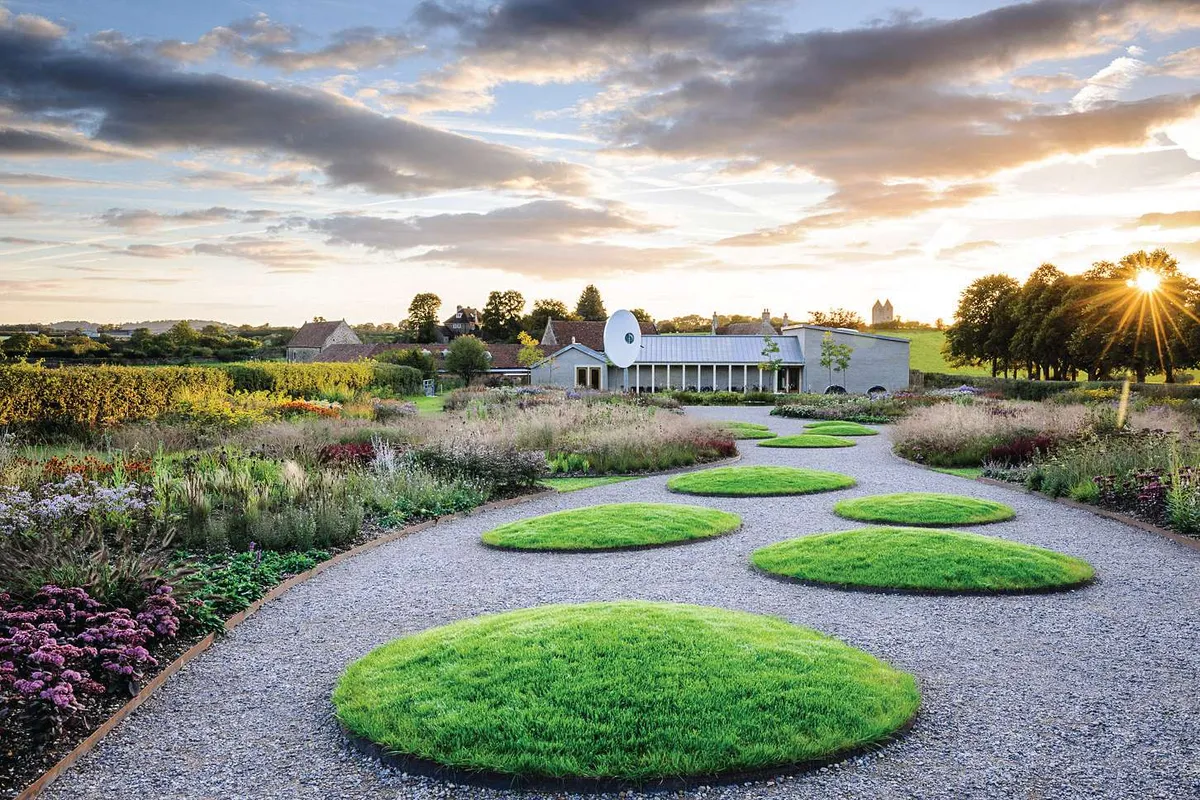
Steel-edged ovals of grass – now oversown with more hard-wearing clover – punctuate the main route through the garden. The gallery building sits at the western end, while at the opposite end sits a contemporary pavilion.
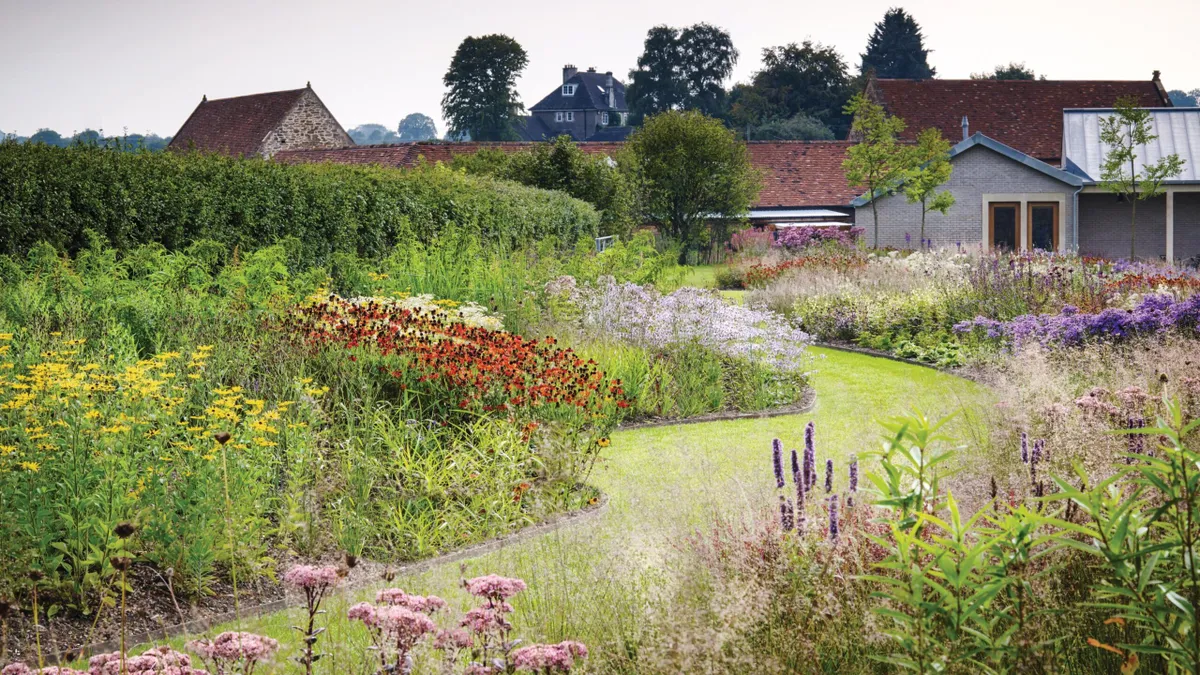
A grass path snakes through borders filled with plants, including the burnt-orange Helenium ‘Moerheim Beauty’ and bright-yellow Rudbeckia subtomentosa.
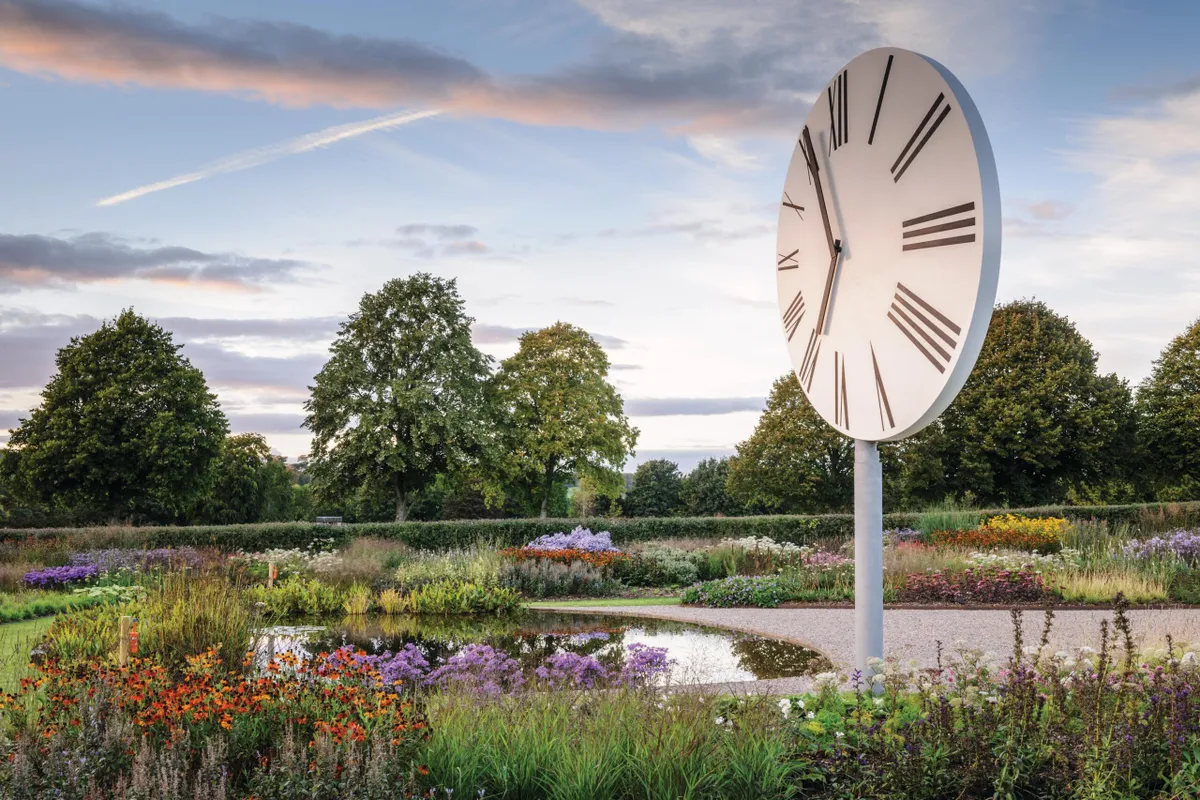
The Field plays host to varied sculptures through the year, such as this work by Anri Sala, Clocked Perspective (2012), next to the asymmetrical pond.

The tall umbels of Eupatorium maculatum Atropurpureum Group are a backdrop to plantings in the inner borders, where flat-topped purple Sedum ‘Matrona’ is a keynote in summer.
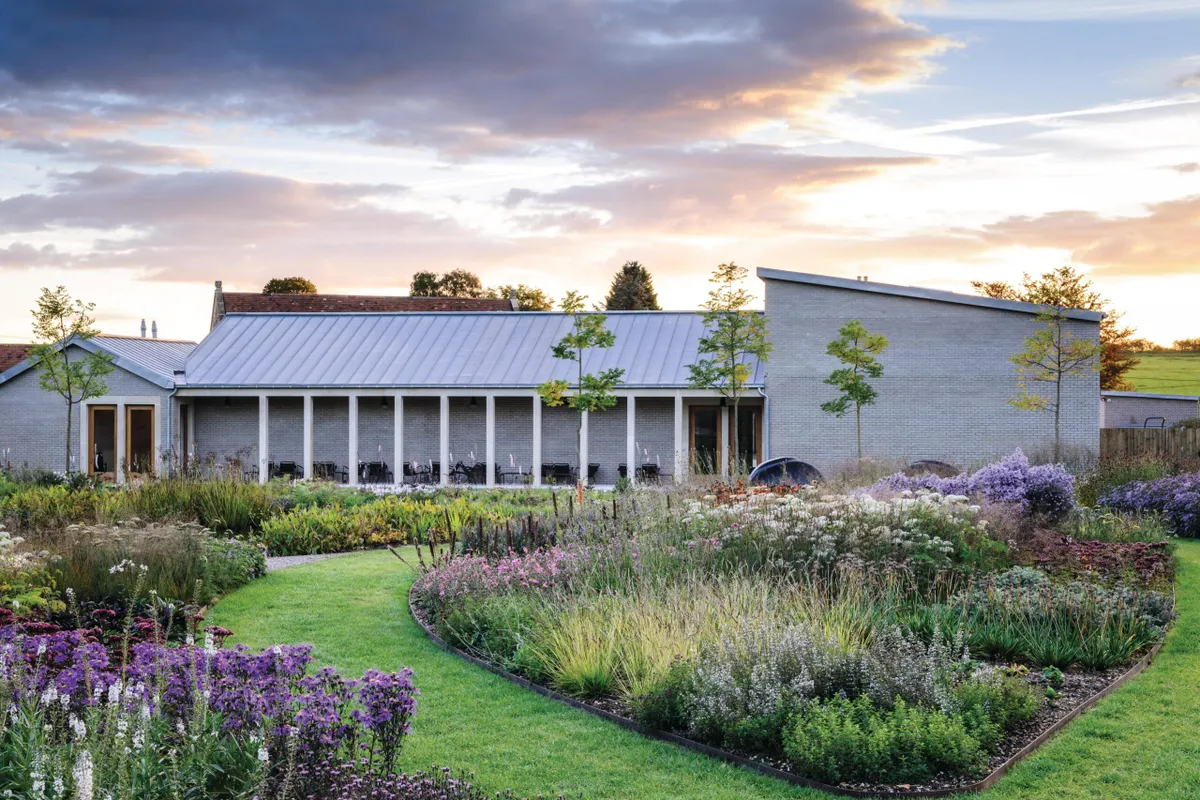
The muted colour of the gallery (right) and cloister (left), which were added by Paris-based architects Laplace, are matched by the colours of the planting in the borders.
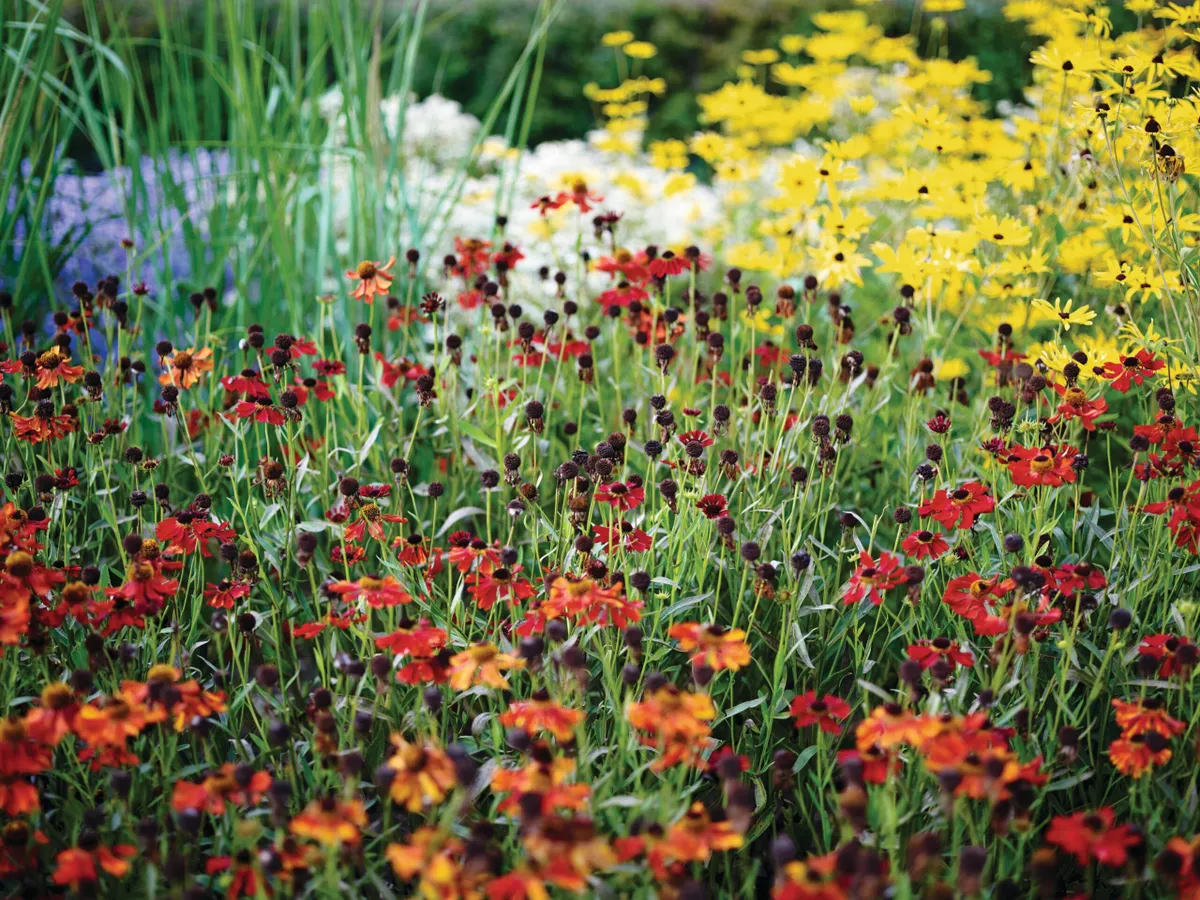
Colour combo
Heleniums are stalwarts of the late-summer border and the old cultivar Helenium ‘Moerheim Beauty’ is still one of the best, with rich mahogany petals swirling downwards from the dark-brown central boss. In a narrow side border its colour is cooled slightly by a misty mass of blue Eurybia x herveyi and the white daisy Doellingeria umbellata. At the other end of the border the boldly branching stems of the sweet coneflower, yellow Rudbeckia subtomentosa add balance to the helenium. Both of these have seedheads that will last through the winter.

Textured tufts
This bed at the top end of the Oudolf Field is dominated by the striking pale bobbles of Eryngium yuccifolium above its spiny blue-grey leaves. The soft, hazy colours are punctuated by the bronze-mahogany flowers of Helenium ‘Moerheim Beauty’, one of Piet’s favourite plants. Towering over its companions is the aptly named Sanguisorba officinalis ‘Red Buttons’, one of the fast-growing family of burnets that have deservedly become favourites in New Perennial plantings. The dried heads of Allium nigrum, which provided colour earlier in the season, will stand throughout the winter.
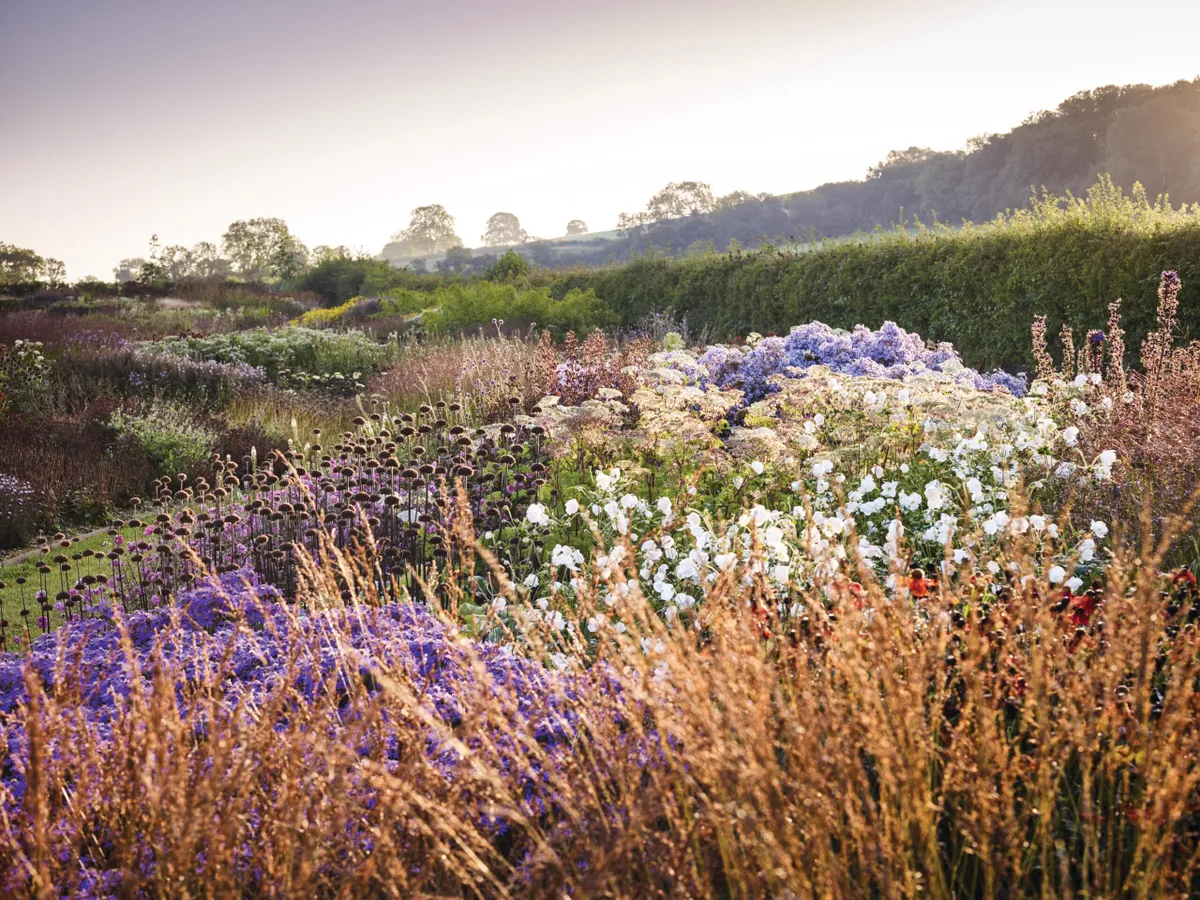
Pale and interesting
Muted tones predominate in this generous curving border by the hedge on the southern boundary of the Oudolf Field. In the foreground is a selection of the purple moor-grass Molinia caerulea ‘Edith Dudszus’, its fine plumes provide an excellent contrast with the knobbed seedheads of Phlomis russeliana. Creating soft pools of mauve are Aster amellus ‘Sonora’ and, at the far end, the taller, reclassified aster Symphyotrichum ‘Little Carlow’. In between is Anemone x hybrida ‘Honorine Jobert’, an old cultivar but still one of the best with white petals around a shining golden eye.
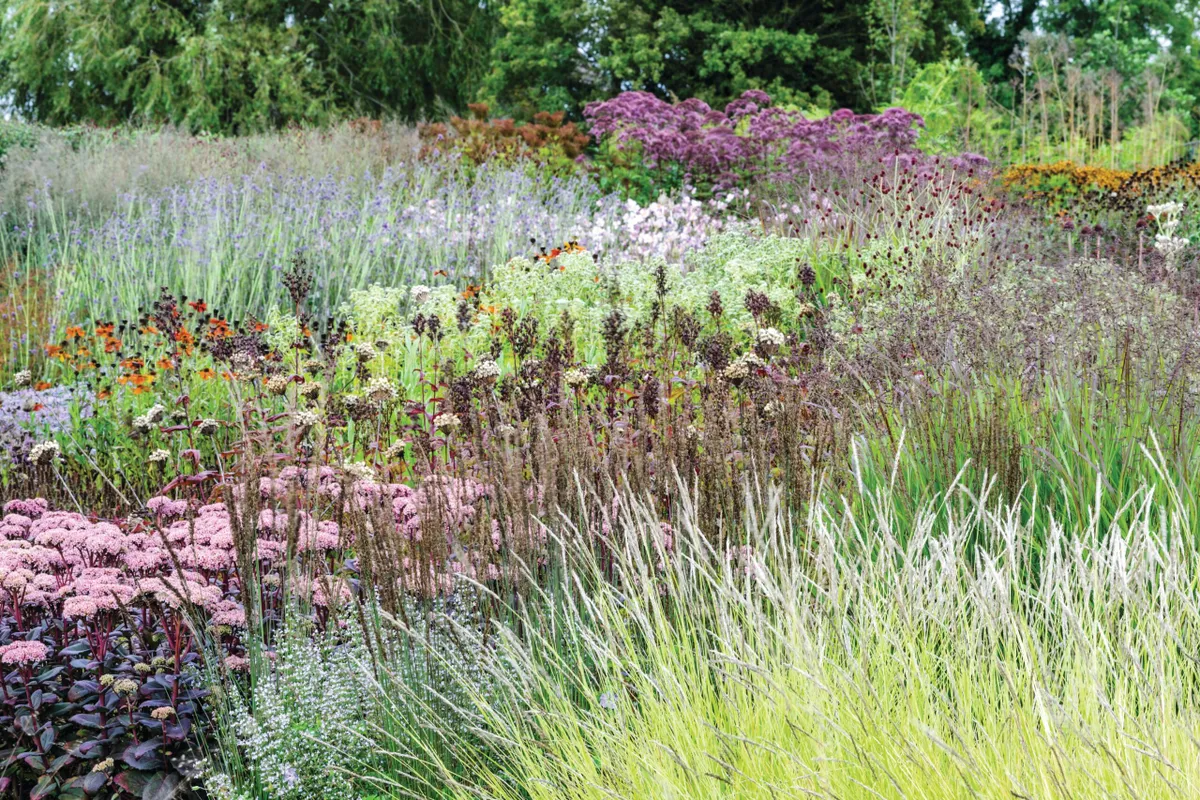
Subtle lines
The grass paths that separate the different beds disappear altogether in this long view over the planting at the top end of the Oudolf Field. At one end is Sedum ‘Matrona’, with its purple flowers and dusky foliage, which flowers over a long period in late summer. Its colour is contrasted with the grey-blue of Perovskia ‘Little Spire’ and the silvery-green flowers of Sesleria autumnalis, which are held above bright foliage. At the far end, the purple of the sedum’s foliage is echoed in a giant stand of Joe Pye weed, Eupatorium maculatum Atropurpureum Group, used as a backstop in the furthest corner of the field.
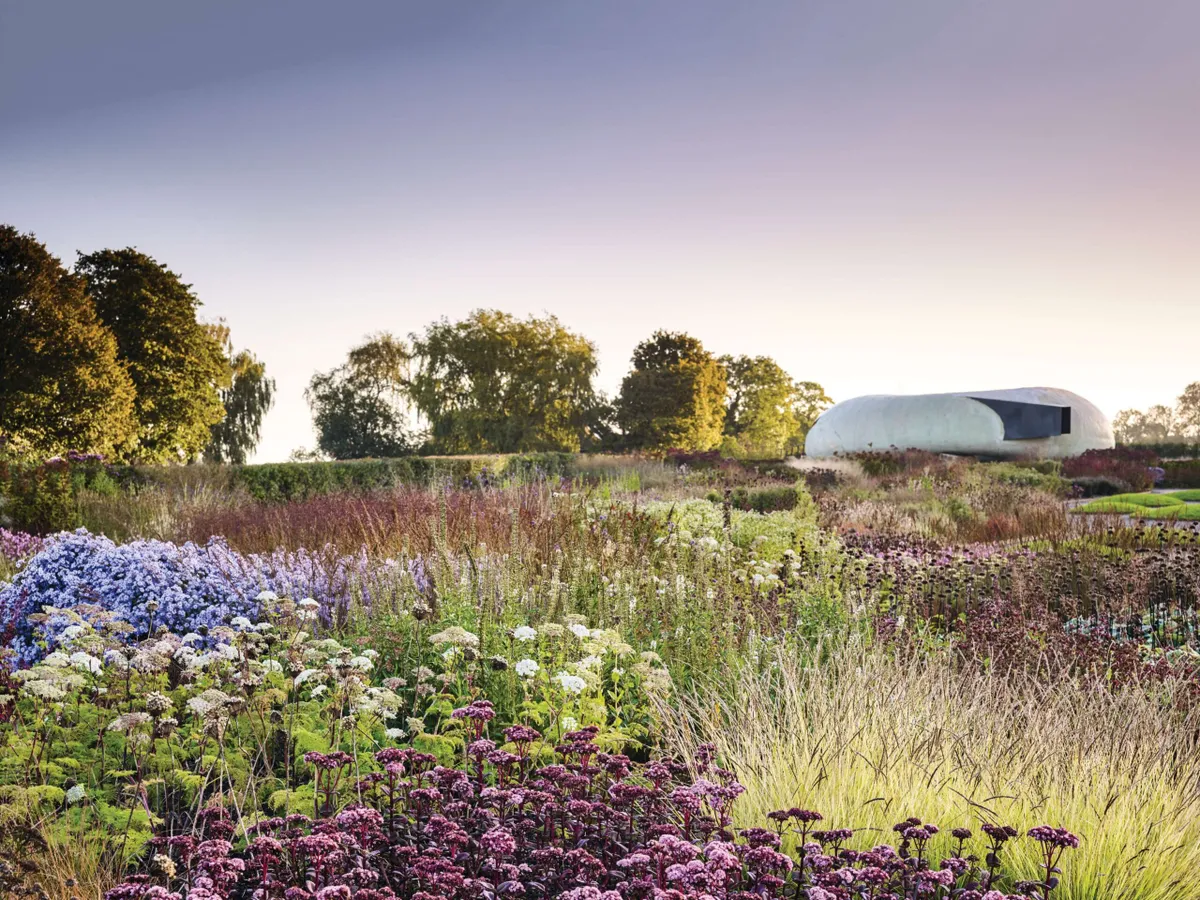
Central beds seem to merge in a single mass of plants: with dark-purple Sedum ‘Matrona’ and the creamy, flat-topped umbels of Selinum wallichianum. At the top of the garden is Smiljan Radic´’s squat fibreglass pavilion.
As head gardener Mark Dumbleton points out, Piet chooses tough plants, which is just as well because growing conditions here are not easy. Two thousand tons of topsoil were brought in for the planting beds, intentionally low in fertility but structurally very poor, which has created difficulties. Underneath, the ground is solidly compacted clay and plants struggle to punch their roots through it. In the Oudolf Field, 26,000 plants have to be kept alive and in balance with each other. Piet is the first to acknowledge that, to endure, his style depends on a good gardener. In Mark, fortunately, he has one.
USEFUL INFORMATION
Hauser & Wirth Somerset, Durslade Farm, Bruton, Somerset BA10 0NL. Tel 01749 814060. Website hauserwirthsomerset.com Open Tuesday-Sunday, 10am-5pm, March-October; 10am-4pm, November-February. Admission free.